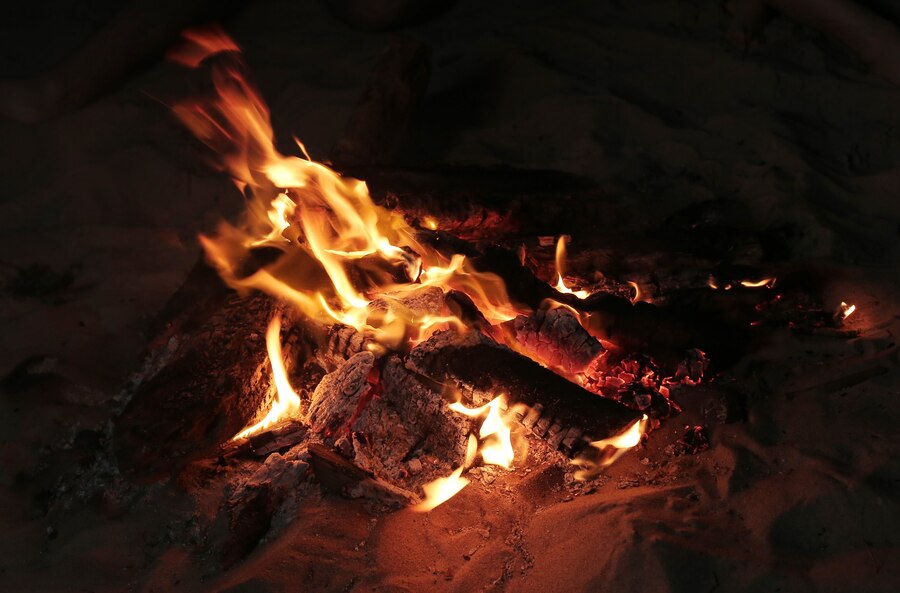For centuries, fire has been crucial to human civilization, providing warmth, cooking capabilities, and security. At the heart of every crackling fire is the intricate chemistry of firewood combustion. Dive deep into the fascinating world of wood burning and explore the chemical reactions, gases produced, and energy released during wood combustion.
Understanding Wood Combustion
The Basics Of Combustion
To comprehend the chemistry of firewood you buy from stores like Burn the Wood, it’s essential to grasp the fundamentals of combustion. Combustion is a chemical reaction that occurs when you burn wood.
The fuel wood reacts with oxygen to release heat energy. During the heat-producing stage, the combustion reaction also transforms the chemical composition of the wood, resulting in various gases and residues.
Oxygen plays a critical role in combustion. When wood is burned, it consumes oxygen from the surrounding air, and without a sufficient oxygen supply, combustion cannot occur efficiently. Proper ventilation is vital to ensure complete combustion and reduce the release of harmful byproducts.
The Stages Of Wood Combustion
Wood combustion comprises different stages, each with distinct chemical processes.
Pyrolysis
The first stage, pyrolysis, involves heating wood without sufficient oxygen. The wood begins thermal decomposition during this phase, breaking down into volatile gases and solid carbon-rich residues.
The wood starts to burn in this stage but doesn’t produce flames or smoke.
Flame
In the second stage, wood combines with oxygen to ignite and produce flames. This stage is characterized by visible fire and the release of a large amount of heat energy.
Various chemical reactions create water vapor, carbon dioxide (CO2), and other compounds called secondary gases like methane and nitrous oxide.
Glowing Embers
After the flames die down, the wood transitions into the glowing ember stage. It continues releasing heat and various gases but at a slower rate than the flame stage.
The wood varies in chemical structure, temperature, and composition at this stage.
The Chemical Composition Of Wood
Wood is primarily composed of cellulose, which starts to break down during the pyrolysis stage. This breakdown releases volatile gases, including hydrogen and methane. The remaining carbon-rich residue contributes to the glowing embers and ash formation.
It’s important to note that the chemical composition of wood can vary depending on the type of wood being burned.
Hardwoods and softwoods, for example, have different cellulose content, which can influence the combustion process and the types of gases produced.
The Gases Released During Wood Combustion

Carbon Dioxide (CO2) And Carbon Monoxide (CO)
One of the critical outcomes of wood combustion is the production of CO2 and CO. These gases are released when wood burns in the presence of oxygen.
CO2 results from complete combustion, while CO is a natural gas produced during incomplete combustion when there’s insufficient oxygen.
Water Vapor
Water and carbon dioxide are common byproducts of wood combustion. Water vapor is created when the hydrogen present in wood combines with oxygen. This vapor can contribute to the visible moisture often observed in wood fires.
Other Gases
Apart from CO2, CO, and water vapor, wood combustion can release secondary gases like methane and volatile organic compounds.
These gases contribute to the combustion process and influence the energy released from burning wood.
If not properly vented, releasing these gases can impact indoor air quality. It’s crucial to have well-designed wood stoves and chimneys that efficiently remove these gases from living spaces.
Wood In Heat Production
The heat produced by burning wood is an excellent source of heat energy due to its high-temperature range. When burned efficiently in a wood stove, it can produce a significant amount of heat, making it a popular choice for heating homes in many parts of the world.
Environmental Impact
Understanding the combustion of wood is essential for efficient heating and assessing its environmental impact. Incomplete combustion can release harmful air pollutants such as carbon monoxide, making it crucial to ensure proper ventilation and combustion in wood stoves.
Sustainable Wood-Burning
Considering the environmental impact of burning wood, it’s important to highlight the concept of sustainable burning. Sustainable practices can significantly reduce the carbon footprint of using wood as a fuel source.
Here are some key elements of sustainable firewood burning:
Sourcing Responsibly
The first step in sustainable wood burning is to source wood responsibly. This method means using wood from well-managed forests or choosing certified sustainable wood products.
Sustainable forestry practices ensure trees are replanted, maintaining a healthy forest ecosystem.
Efficient Appliances
Modern wood-burning stoves and furnaces are designed for efficiency. They can burn wood at higher temperatures, which not only maximizes heat production but also minimizes the release of harmful emissions into the environment.
Proper Maintenance
Regular maintenance of wood-burning appliances is essential. Clean chimneys and stovepipes, replace gaskets and seals, and ensure the air intake functions optimally.
These measures not only improve efficiency but also enhance safety.
Responsible Ash Disposal
Wood combustion produces ash as a byproduct. Proper disposal of ash is part of sustainable wood burning.
Ash can be a valuable source of nutrients for gardens when spread as a soil amendment, reducing waste and benefiting the environment.
The Future Of Wood Combustion
As you navigate the complexities of wood combustion, it’s clear that this age-old practice has a future in the modern world. To ensure its sustainability and minimize environmental impact, several advancements are being explored:
Biomass Energy
Wood combustion is part of a broader category known as biomass energy. Researchers are continually developing technologies that can convert wood and other organic materials into biofuels, reducing greenhouse gas emissions and reliance on fossil fuels.
Advanced Stove Designs
The design of wood-burning stoves is evolving to maximize efficiency and minimize emissions. Modern stoves incorporate secondary combustion chambers and advanced air control systems to ensure clean and efficient burning.
Renewable Energy Integration
Wood combustion can complement renewable energy sources like solar and wind power. Combined heat and power (CHP) systems, also known as cogeneration, use wood to generate electricity and heat, making the process even more energy-efficient.
Last Words
The chemistry of firewood combustion is a complex yet fascinating process that involves various stages, chemical reactions, and the release of different gases. Wood combustion significantly provides heat and comfort, from the initial pyrolysis of burned wood to the formation of glowing embers. However, it’s essential to be mindful of the safety precautions when enjoying the warmth of a wood-burning stove.
Read Also:




























